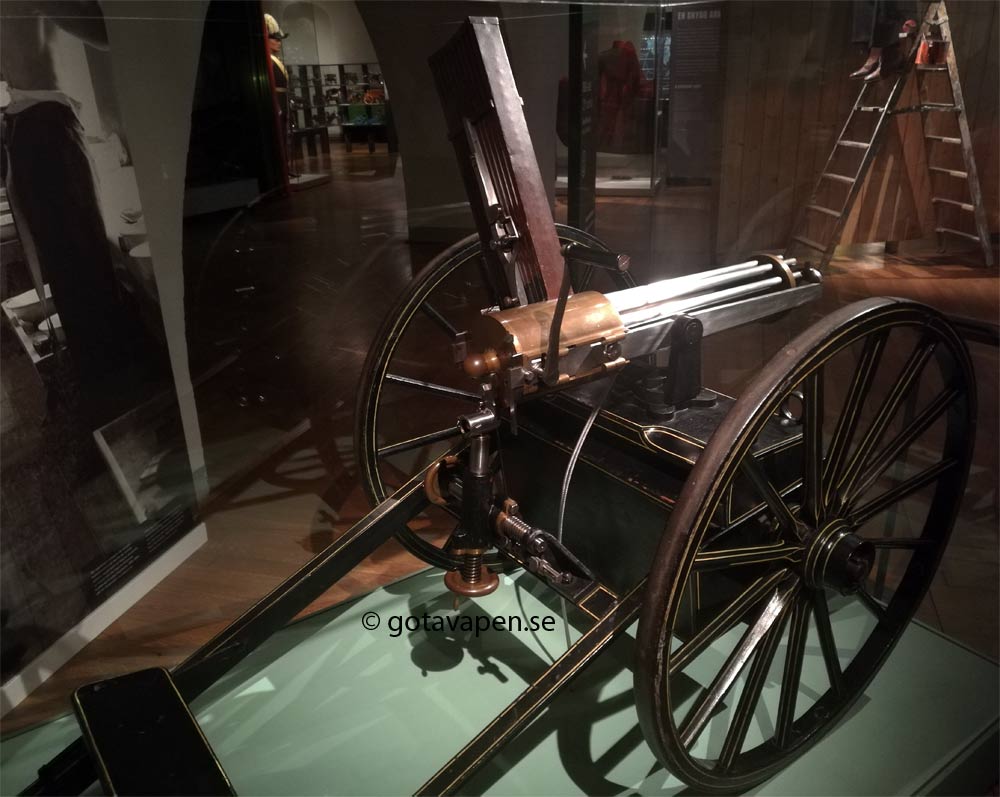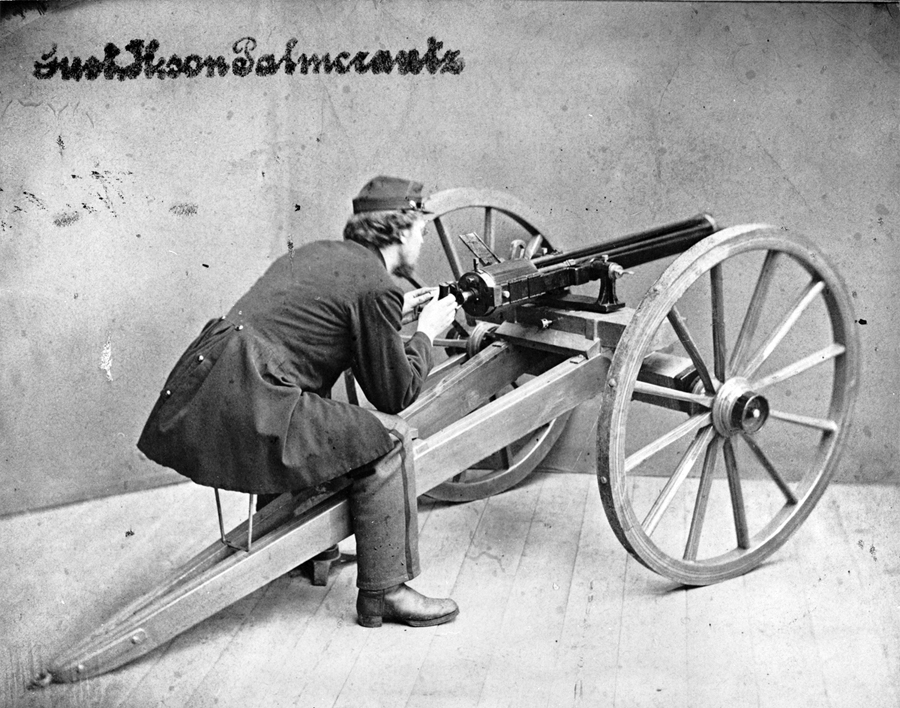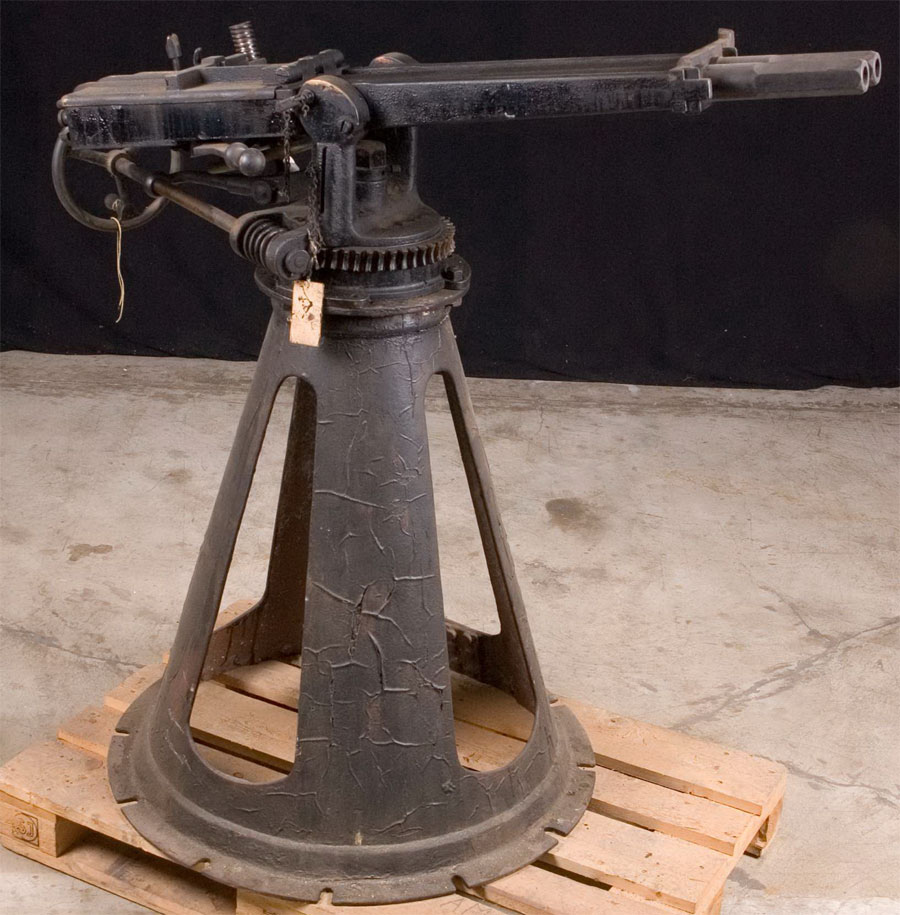|
This
series of articles will basically only deal with Swedish Army Machine guns
used as support weapon which can be carried by the soldiers and used
separated from vehicles.
Sweden
has a long history of Machine guns. 1865 Sweden tested Richard Gatling’s
machine gun from 1862. It had the designation Kulspruta fm/1865 (Machine gun
test model / 1865). The calibre was 11 mm and had 10 barrels which turned
around by cranking a handle. It never became adopted. The Gatling is a
mechanical operated machine gun and not automatic.
In 1870
Lt. D. H. Friberg got a patent for his operating principles of a real
automatic machine gun! The earliest drawing found are dated 1882! This was
before Maxim made his machine gun. Due to the black powder ammunition which
was used at that time, the gun became full with slag very fast and
malfunctioned. Because of this reason nothing came out of Friberg’s
invention that time.
|
Look at Nordenfelt's
2 barrel
Mechanical Machine gun here
on

(picture
Armémuseum)
|
Early test with ten revolving barrels 1869.
This Machine
Gun with 10 revolving barrels was designed 1869 by Helge Palmcrantz
(1842-1880). Test showed that the mechanism was unreliable if more than 300
shots per minute were fired. The problems were due to black powder
ammunition.
This machine gun
has revolving barrels made of cut off Danish Remington M1867 barrels. The
system is similar to the Gatling, however a less complicated mechanism.



An artillery soldier with Palmkrantz machine gun
In 1874 he patented a new construction with
horizontal barrels, which became a success throughout Europe. The main
problem was the black powder cartridges.
Kulspruta m/1874
The
first adopted
Mechanical Machine gun was Kulspruta M/1874 (Kulsp M/74).

Machinegun
M/1874 (25mm)
(picture Armémuseum)
Kulspruta m/1875 (Kulsp m/75)
The
second adopted
Mechanical Machine gun was Kulspruta m/1875 (Kulsp m/75). It was also a
multi-barrel construction. It was made by Stockholms Vapenfabrik. The
calibre was the same as the Swedish Remington rifles – 12,17x42R. |